Catalogs, Metadata, and Databases (Part I)
February 9, 2022 in Manuscript Studies, Research Group Speaks (The Series), Uncategorized
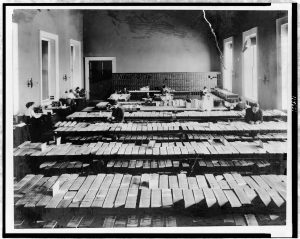
Card Division in the Library of Congress, Washington, D.C. Photograph circa 1900-1920. Image Public Domain.
The Research Group Speaks
Episode 6
Catalogs, Metadata, and Databases (Part I)
A Roundtable
19 February 2022
[Posted on 9 February 2022, with updates, now with the accomplishment of the event.]
By special request, a roundtable discussion aims to consider challenges and opportunities encountered in making, and using, catalogs and databases — with a focus especially on bibliographical and manuscript materials. This aim flows from the plan to hold a lunch at the Index of Medieval Art at Princeton University during our 2020 Spring Symposium (which had to be cancelled), to bring together participants engaged with such issues, from the Index of Medieval Art, the BASIRA Project, the Schoenberg Institute for Manuscript Studies, and elsewhere.
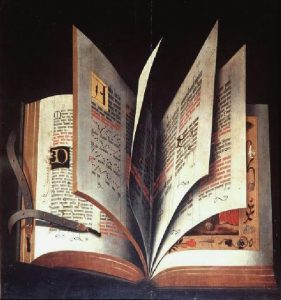
Florence, Galleria degli Uffizi, Anonymous, Still Life of an Illuminated Book, German School, 15th century. Image Public Domain.
As the next episode in the online series of webinars, workshops, and other meetings wherein The Research Group Speaks, the February 2022 Roundtable explores challenges and opportunities for the catalogs, metadata, and databases, the characteristics of the materials which these structures seek to address, and some case studies. Examples include the BASIRA Project on “Books as Symbols in Renaissance Art”, the Index of Medieval Art Database, Digital Scriptorium 2.0, the Pinakes/Πίνακες Database of Greek Texts and Manuscripts, and approaches to cataloging collections or selected source materials (such as artists’ books).
Speakers and Respondents include Barbara Williams Ellertson, Jessica L. Savage, Linde M. Brocato, Lynn Ransom, Katharine Chandler, Georgi Parpulov, Howard German, and David Porreca. Subjects for consideration include “Standards and Vocabularies in Art-History Cataloging”, “Labelling, Way-finding, and Meaning”, “About ‘Aboutness’ “, “Teaching Cataloguing Today”, “The Pinakes Database”, “Digital Scriptorium 2.0: Manuscript Description in a Linked Open Data Context”, and more. See the Program below.
We gather perspectives from those who make, and those who use, such resources.
Preparations for the roundtable offer ‘Handouts’ in online format.
1) Below here:
- a preliminary list of Questions for discussion at the roundtable and beyond, with a view also to planning further sessions on these subjects
- an announcement about Future Plans, as Some Next Steps, for further sessions on these and related subjects.
2) Also, as an individual webpage:
- an online Handout with a Draft List of Links to projects, databases, and other resources, including some mentioned in presentations in the roundtable:
Catalogs, Metadata, and Databases: A Handlist of Links.
The roundtable is designed to compare notes, formulate questions, express wishes, and plan further sessions. For example, we prepare sessions on “Catalogs, Metadata, and Databases, Continued“, for the pair of Spring and Autumn Symposia on “Structures of Knowledge” and “Supports for Knowledge”. They belong to one of the overarching themes for RGME activities in 2022: “Structured Knowledge“.
We welcome advice, suggestions, and contributions.
The Program for the Roundtable
Time-frame and Structure
The session of about 1 1/2 hours, starting at 1pm EST, has a brief introduction (pointing to this page), the series of presentations of about ten minutes each, with scope for sharing screens if wished, followed by about one half-hour for responses, questions, answers, and discussion with the audience. Options for posing questions or comments include the Chat function, raised virtual hands, and other signals. The discussion reports, and invites, suggestions for the follow-up sessions on “Catalogs, Metadata, and Databases, Continued” planned for later this year.
A recording of the event might become available afterwards.
Presenters
Some presenters have contributed to earlier RGME events. They include Symposia, either in person or intended (the cancelled 2020 Spring Symposium); Congress Sessions; and online Episodes of The Research Group Speaks. One is also a Guest Blogger for our blog on Manuscript Studies (see its Contents List). We thank all the presenters for this roundtable.
Moderator: Mildred Budny (https://manuscriptevidence.org/wpme/ ), Executive Director of the RGME
In a nutshell: The Illustrated Catalogue in two volumes (1997), which includes a detailed description of its “Scope and Structure”, was produced as a co-publication in print by the RGME (see RGME Publications). The ongoing and evolving challenges of cataloging manuscripts and other materials, as well as their presentation for study, research, and display in many spheres and structures, and for various purposes, continue to claim our keen interest. We thank the participants for sharing their expertise and experience for this meeting.
Speakers
Jessica L. Savage (https://theindex.princeton.edu/)
“Standards and Vocabularies in Art History Cataloging”
Standards and vocabularies in art history cataloging can be wonderful aids and powerful access tools, providing better term choices, increasing operability, and structuring thesauri with both breadth and specificity. While these lists are guideposts to cataloging practice, the challenge of characterizing a work’s subject matter can be complex. The objects at the center of this practice can generate new themes and iconographic developments not described in existing vocabularies; moreover, they provide unique documentary and material evidence which expands cataloging lists, seemingly ad infinitum. Art history cataloging therefore must approach these expansive vocabularies with flexibility and a keen eye for their usefulness and authority as terms. Thus while cataloging standards provide an important armature for discoverability, they are also shaped through assessment of their legacy, multiple meanings, and applications — and going forward, by engaging in collaborative scholarly inquiry, and embracing the very human role in reading art historical images.
Barbara Williams Ellertson (https://basiraproject.org )
“Labeling, Way-Finding, and Meaning”
The BASIRA Project gathers images of medieval and Renaissance art, which are tagged with labels from a complex schema. Those labels enable users of the database to locate specific items or features; we use controlled vocabulary to enable cross-links with other image collections and ontologies. However, structured systems have inherent challenges such as imprecision and the possibility of mis-leading ‘certainty’, which will be described briefly.
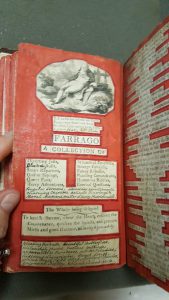
Richard Twiss, ‘Farrago’, held in the Unversity of Miami Special Collections, Artists’ Books Collection, ‘Title page’. Photograph Linde M. Brocato.
Linde M. Brocato (https://miami.academia.edu/LindeMBrocato )
“About ‘Aboutness'”
Starting with a liminal case or two (such as artists’ books, which call for reconsideration in cataloging), I will reflect on Known and Not-Known Item Searches, Ad Hoc Categories and Kinds (with perhaps a gesture toward Jorge Luis Borges), and disasters (of economies of) scale.
Katharine Chandler (https://www.linkedin.com/in/katharine-chandler/; https://kcchandler.com/)
[Note that, because of illness, Katharine was unable to present on the day. Our Spring Symposium (see below) will include an expanded version of her paper.]
“Teaching Cataloging Today; With an Update on the DACT Fragments Campaign and Controlled Vocabularies for Fragmentarium and Cantus”
Teaching cataloging to library and information students today involves instruction about past, present, and future technologies, as well as guidance for “critical cataloging” (i.e., recognizing the ways in which classification systems are biased and codify long-held prejudice through language and erasure). I will speak some about this instruction and the increased interest of students in work with special collections.
Additionally, I will provide information about the DACT (Digital Analysis of Chant Transmission) project (https://dact-chant.ca/ ), which is a multi-pronged effort to create workflow and controlled vocabularies for uploading fragments to the Fragmentarium (https://fragmentarium.ms/ ) and the CANTUS Chant (https://cantus.uwaterloo.ca) databases.
Georgi Parpulov (https://independent.academia.edu/GeorgiParpulov )
“The Pinakes | Πίνακες Database”
Pinakes (https://pinakes.irht.cnrs.fr/ ) is an on-line union catalogue of Greek manuscripts maintained by the Institut de Recherche et d’Histoire des Textes in Paris. I will briefly describe its main features and explain how it extends its coverage.
Lynn Ransom (https://www.library.upenn.edu/people/staff/lynn-ransom )
“Digital Scriptorium 2.0: Manuscript Description in a Linked Open Data Context”
This presentation will reflect upon the role of linked open data in the construction of Digital Scriptorium 2.0 (https://digital-scriptorium.org/ds-2-0/ ) and its implication for manuscript and research in a digital context.
Respondents
Howard German (https://www.linkedin.com/in/howard-german-a16ab7b/ )
“Risk and Migration in Managing Large Databases and Their Strategies”
A response to the presentations offers experience from a business perspective in working with very large databases and all the complexities that are associated with them.
David Porreca (https://uwaterloo.ca/classical-studies/people-profiles/david-porreca )
“My $0.02 Worth”
This brief response is designed to offer observations about the presentations and their subjects, and to lead into the Q&A.
[Update: David Porreca’s notes for and from this Roundtable now accompany the Program notes for the Session on “Catalogs, Metadata, and Databases, Continued (Part II)” in the 2022 Spring Symposium on “Structures of Knowledge”.]
*****
Suggested Questions to Pose and Consider
We suggest a list of Questions for consideration for both the roundtable and future planning. In some ways, these questions might amount to forms of Wish Lists or To-Do Lists. We welcome additions and refinements.
- How do we go about assigning meaning to information?
- When we locate a resource, how can we understand the scope and limitations of what we have ‘found’?
- How do we determine ‘aboutness’ in our records? How much interpretation about a work is too much?
- What do we gain and what do we lose by using controlled vocabularies? Are controlled terms really all that valuable when descriptive text can be easily searched?
- Can ‘anything’ receive a controlled term? Have you ever been ‘stumped’ to find the right classification?
- Will controlled vocabulary lists ever be fully ‘controlled’? How does your organization keep up to date on standards?
- How do you address cataloging bias? What generates these deeper looks?
- Thinking of backlog, how do you balance making a system cleaner with inherited metadata vs. creating new metadata?
- How do we protect and preserve data? What are the risks with complicated database migrations?
- How can we go forth embracing the human side of cataloging while reaching full potential in our systems?
*****
“I was Here . . . ”
— Richard Twiss, Farrago, with annotations travelling in time, across the page and space, with the Pons Pragensis in print by Wenceslaus Hollar (1607–1677), and the first-person annotations (mentioning 20–26 September 1769). On this book-as-assembly, see the Handlist of Links: “Cataloging in Action: Case Studies or Exhibits (selected by Linde M. Brocato)”.

Richard Twiss, ‘Farrago’, held in the Unversity of Miami Special Collections, Artists’ Books Collection, ‘I was here’. Photograph Linde M. Brocato.
*****
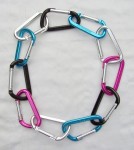
Links in necklace form, courtesy of “Milly Budny Designs”
[Draft] Handlist of Links
We gather a list of links to sites and other publications for exploration. The link provides, for examples, sites relating to Catalogs, Controlled Vocabulary, and Other Resources.
Some links are listed also in the Handout for Episode 4 of “The Research Group Speaks”:
Additions are welcome.
*****
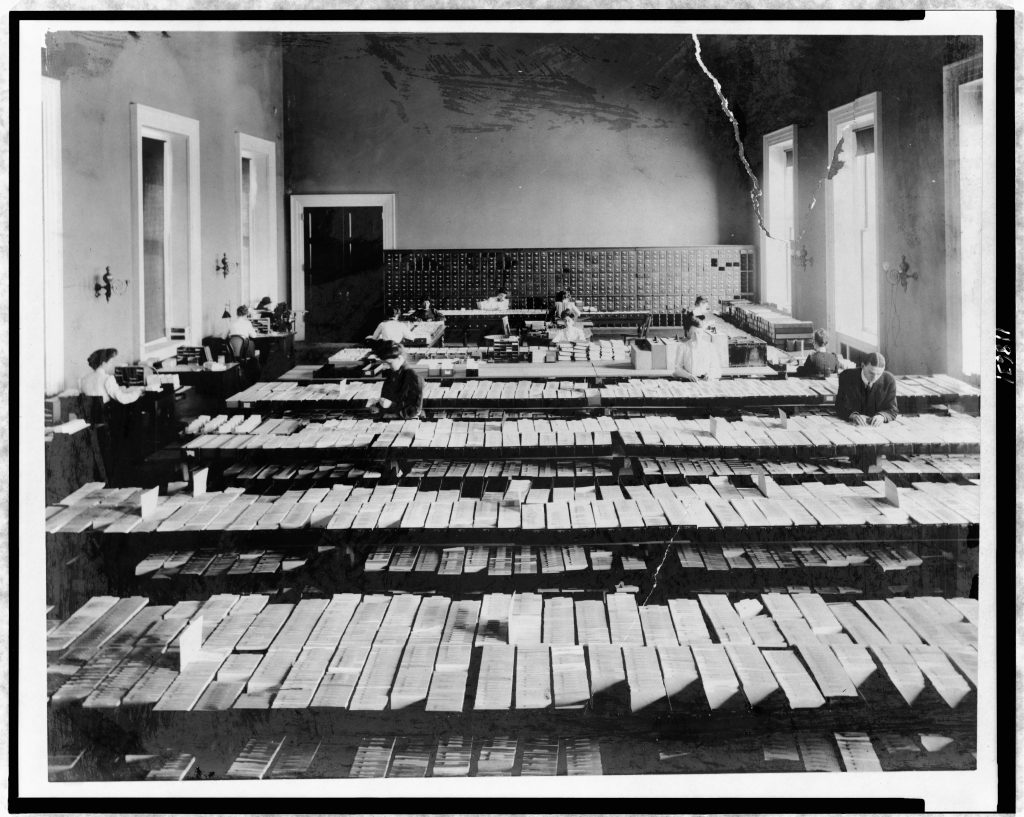
Card Division in the Library of Congress, Washington, D.C. Photograph circa 1900-1920. Image Public Domain.
*****
We thank the speakers, respondents, and participants for joining the plan.
*****
More Episodes are in preparation. See The Research Group Speaks: The Series.
See also below: Some Next Steps.
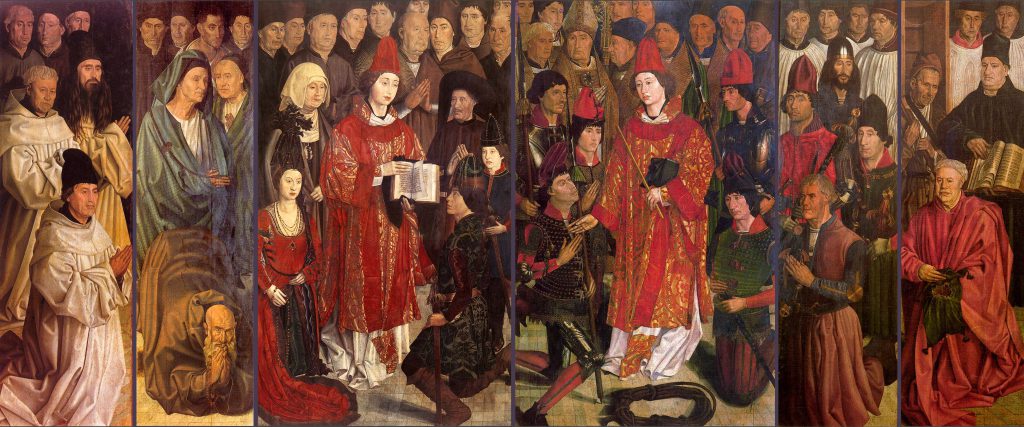
Lisbon, Museu Nacional de Arte Antiga: The mid 15th-century Saint Vincent Panels, attributed to Nuno Gonçalves. Image (https://upload.wikimedia.org/wikipedia/commons/3/3a/Nuno_Gon%C3%A7alves._Paineis_de_S%C3%A3o_Vicente_de_Fora.jpg) via Creative Commons.
*****
Some Next Steps
Suggestions for further presentations in future sessions may find places in several forms:
- Episodes in the online series of The Research Group Speaks (in episodes usually of about 1 1/2 hours long) https://manuscriptevidence.org/wpme/the-research-group-speaks-the-series/
- Sessions at the interlinked pair of Spring and Autumn Symposia
on “Structures of Knowledge” and “Supports for Knowledge”
(One day each with sessions of about 1 1/2 hours each,
with presentations of 20 to 30 minutes, or shorter or longer by arrangement) - Workshops (of about 1 1/2 hours in one or more sessions) as part of the Symposia or the online series.
Some proposed presentations at these Symposia offer refreshed materials which had been planned for the cancelled 2020 Spring Symposium.
- See https://manuscriptevidence.
org/wpme/2020-spring- symposium-save-the-date , with a published Program Booklet including illustrations and Abstracts.
“The Living Library”
“History and Uses of Paper”
“Hybrid Books, I and II”
“Manuscripts, Works of Art, Photography, and Facsimiles, I and II”
“Teaching with Manuscripts”
- “How to be Tarzan in the Catalog” (with audience requests invited ahead of time).
- See https://manuscriptevidence.org/wpme/2022-international-congress-on-medieval-studies-program
(Abstracts of the Papers are included).
More details to follow. Watch this space.
*****
Do you have suggestions for subjects? Please let us know.
Please leave your Comments below, Contact Us, and visit our FaceBook Page. We look forward to hearing from you.
*****
